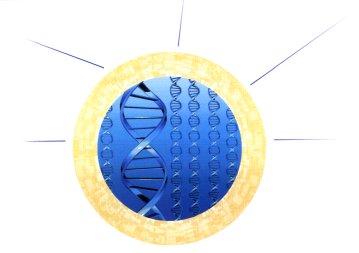Overview
The neuroweb project: an overview. NEUROWEB project improves healthcare delivery achieving knowledge-based, personalised diagnosis and therapy through vertical integration of existing clinical and genetic databases. NEUROWEB simulates the sharing of knowledge on cerebrovascular diseases using an on-line web platform.
NEUROWEB project improves healthcare delivery achieving knowledge-based, personalised diagnosis and therapy through vertical integration of existing clinical and genetic databases. NEUROWEB simulates the sharing of knowledge on cerebrovascular diseases using an on-line web platform.
The aim of the NEUROWEB project is to design and develop an intelligent web-based system that allows integration, easy access and sharing of clinical data and bipomedical knowledge, with a protoypical application in neurology and neurosciences: the system will support scientists and doctors in thei every day work by allowing them define workflows that can be stored, shared and executed any time.
NEUROWEB project represents one of the first applied research financed by EU e-Health programme, in the filed of neurovascular diseases that might systematicaly generalise the exploitation of genomic information into the daily clinical practise, facilitating significatn quality improvements in diagnosis and therapy.
The Neuroweb project is focused on the cerebrovasculare diseases defined by the WHO in diagnostic 433, 434 and 435.
Ischemic stroke is a major health problem in developed counries: it is the most common cause of permanent disability, the second most common cause of dementia and the third most common cause of death. Since it is most common in dhe elderly, the public health impact of stroke will increase in the nesxt decades with growing life expectancy.
Ischemic stroke is a complex phoenotype caused by obstruction of blood flow through extra or intracranial vessels. Complexity regards the diversity of iths pathophysiology (large-vessels occlusive disease, small vessel occlusive disease, cardiogenic, rare or undetermined data), clinical presentation (depending on the affected brain physiatrist and so on). The predominant risk factor for all type of stroke is hypertension. Hypertension in itself is a comlex disease, as are the other known risk factor, diabetes and hyperlipidemia. In addition there are environmental risk factors, such as smoking.
Stroke results therefore form a group of heterogeneous disorders with multiple risk factors. The genetic factors contributing to stroke may act not only directly (several genes of rare stroke syndromes have been identify, such as Notch3 in crebral autosomal dominant arteriopathy with subcortical infarctions and leukoencephalopathy CADASIL) byt also indirectly, by increasing the risk of some predisposing conditions, such as diabetes, hyperlipidemia and hypertension. Moreover epidemiological studies have suggested that there could be also unknown genetic factors for stroke that do not influence susceptibilities to the known risk factors. Individualized therapies and alternative strategies for prevention require new instruments that are able to expand knowledge in stroke pathophysiology, identyfying new risk factors and means to modulate thier impact on clinical outcome (death, relapse, disability). Since ischemic stroke is one of the most complex diseases, a large number of clinical, cellular, molecular (including genomic) data have to be integrated and analyzed to have significant improvements.
Moreover epidemiological studies have suggested that there could be also unknown genetic factors for stroke that do not influence susceptibilities to the known risk factors. Individualized therapies and alternative strategies for prevention require new instruments that are able to expand knowledge in stroke pathophysiology, identyfying new risk factors and means to modulate thier impact on clinical outcome (death, relapse, disability). Since ischemic stroke is one of the most complex diseases, a large number of clinical, cellular, molecular (including genomic) data have to be integrated and analyzed to have significant improvements.
It is generally accepted that Europe has been leading in brain research until epproximately 10 or 20 years ago. After the time this role has been taken over by the United States' brain research is ever widening. NEUROWEB will contribute to ameliorated treatments for brain diseases and to increase European competitiveness in this field, by building partnerships between advancved laboratories, medical institutions and software and service providers.
